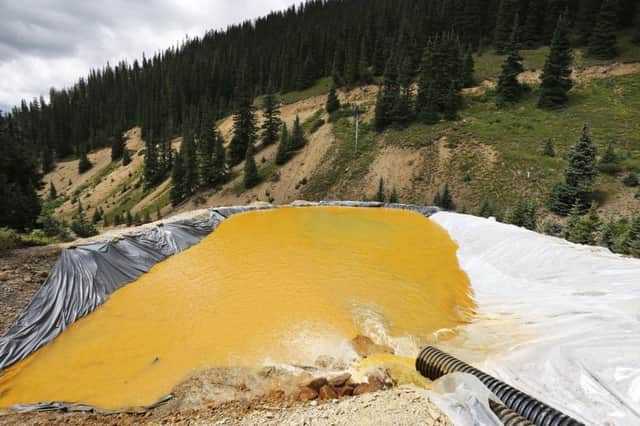Experts warn of toxic risks from Colorado mine


It will continue to be dangerous when contaminated sediment gets stirred up from the river bottom, authorities said on Wednesday, suggesting there is no easy fix.
The immediate impact of the three million gallon spill on 5 August eased as the plume of contamination dissipated on its way to Lake Powell along the Utah-Arizona border.
Advertisement
Hide AdAdvertisement
Hide AdBut the strong dose of arsenic, cadmium, lead and other heavy metals settled as the wastewater travelled downstream, layering the bottom of the river with contaminants which will pose risks in the future.
“There will be a source of these contaminants in the rivers for a long time,” said hydrologist Tom Myers, who runs a Nevada-based consulting business. “Every time there’s a high flow, it will stir it up and it will be moving those contaminants downstream.”
The US Environmental Protection Agency (EPA) had pushed for 25 years to grant superfund status to the partly collapsed Gold King mine and other former mines leaking heavy metals above the old mining town of Silverton, Colorado. That would have brought in funding for a comprehensive clean-up.
Local authorities spurned federal intervention, leaving a smaller EPA-led team to investigate a small if steady stream of pollution. That team accidentally breached a debris wall at the mine, unleashing a pool of contaminated water that turned the Animas River yellow.
EPA administrator Gina McCarthy, on a visit to Durango, downstream of the spill site, said she had ordered agency personnel across the country to cease field investigation work on abandoned mines while the spill was investigated. EPA officials said they were seeking details on what the stop-work order means.
State attorney generals from Colorado, New Mexico and Utah appeared separately in Durango, pledging to make sure residents are compensated for damages from the spill. But they said they would hold off on legal action against the federal government to give the EPA a chance to prove it will be accountable.
Colorado state health officials told residents in Durango they can resume using treatment facilities that draw water from the Animas.
The EPA’s response to the disaster has been criticised by local environmentalists. Many have said the data released by the agency are incomplete without comparisons to historical data or other context and interpretation about what its impacts could be.